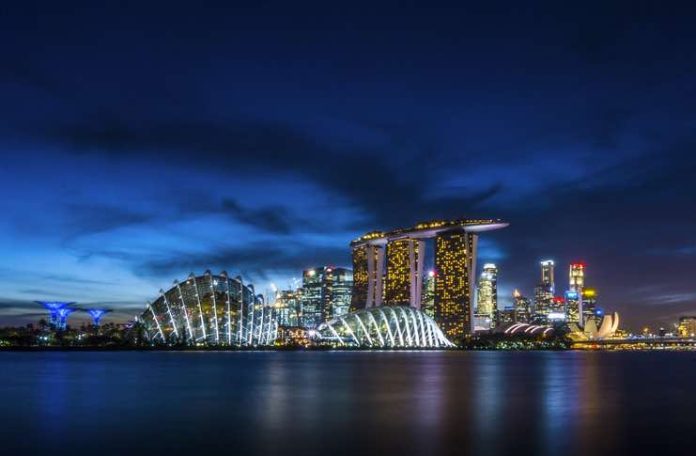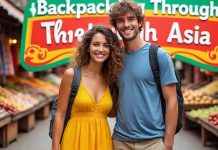
When I first touched down in Singapore, I was greeted by a wave of warmth—not the friendly kind, but the kind that makes you instantly rethink packing jeans. The humidity is real, my friends. But beneath the tropical heat lies a city bursting with charm, cleanliness, and an almost futuristic vibe. If you’re planning a travel trip to Singapore for the first time, as part of our Asia Travel tips, here are some tips to ensure you can focus on enjoying this vibrant destination.
Visa Requirements and Entry Guidelines
Before you get lost in the excitement of booking your hotel and planning which hawker stall you’ll visit first, let’s talk about getting into Singapore. For most travelers, this part is smooth sailing. If you’re coming from countries like the US, the UK, or Australia, you can enter Singapore without a visa and stay up to 30 or 90 days.
A quick note: Make sure your passport has at least six months of validity left. I’ve heard horror stories of travelers getting turned away because of this tiny detail. Trust me, you don’t want your vacation cut short before it even starts.
Watch this Singapore travel guide video for more tips:
When to Visit Singapore
Singapore is one of those magical places where you can visit any time of the year. With its location near the equator, the weather is hot and humid all year round, so don’t expect any chilly evenings or snow-covered streets. That said, there are better times to visit depending on your interests.
If you love festivals, you might want to time your visit around Chinese New Year or the Singapore Grand Prix in September. However, expect the crowds (and prices) to rise along with the excitement. If you’re more into leisurely sightseeing without having to elbow your way through throngs of tourists, aim for quieter months like February or July. Whatever time of year you choose, be sure to pack an umbrella because those sudden tropical downpours love to surprise you when you’re least prepared.
Packing Essentials for Singapore
Let’s talk packing. If you’re like me, you’ve probably packed more than you needed for trips in the past. In Singapore, overpacking is not your friend. The heat and humidity are relentless, so opt for lightweight, breathable clothing. Stick with shorts, dresses, and loose shirts—nothing that will cling to you in the heat.
But here’s the kicker: while it’s boiling hot outside, the indoors can feel like a freezer. Malls, cinemas, and restaurants blast their air-conditioning, so pack a light jacket or scarf. You’ll look weird walking around with goosebumps when it’s 30°C outside, but you’ll thank me later. And for the love of all things comfortable, wear proper walking shoes. Singapore is super walkable, but your feet won’t be happy if you try to brave it in flimsy sandals like I did once (never again).
Travel Insurance Tips: Safety Net for the Unexpected
No one plans on getting sick or losing their luggage, but trust me, these things happen when you least expect them. Singapore may be a dream destination, but you don’t want to end up with a nightmare hospital bill if you fall ill or get injured. Travel insurance is like that safety net you hope you never need but are incredibly grateful for when you do.
It’s crucial to choose a plan that covers medical expenses, trip cancellations, and baggage loss. I’ve been to my share of hospitals abroad, and without travel insurance, I’d be stuck paying off bills that would’ve cost more than my entire trip.
Make Use of Travel Insurance Promotions
Many insurance companies offer travel insurance promotions to lure in customers. Who doesn’t love a good deal, right? But here’s the catch: make sure the promotion doesn’t skimp on coverage. You don’t want to end up with a “deal” that leaves you uncovered when you need it most. A good travel insurance promotion should offer extra perks like emergency medical evacuation at no extra cost, so keep your eyes peeled for those offers.
In short, travel insurance is like packing an extra sense of security, giving you the freedom to explore without constantly worrying about the “what ifs.”
Getting Around Singapore
Singapore’s public transportation system is nothing short of phenomenal. Clean, punctual, and affordable, the MRT (Mass Rapid Transit) is the quickest way to get around the city. It’s also wonderfully air-conditioned—something you’ll appreciate after a long day of exploring.
Here’s a tip: Grab an EZ-Link card at any MRT station. This rechargeable card works for both the MRT and buses, and it’s the easiest way to travel without constantly hunting for loose change. The trains and buses can get crowded during rush hour, but if you time your trips right, you’ll avoid the worst of it.
And for those late-night adventures, taxis and ride-hailing apps like Grab are available, though a bit more expensive than the MRT.
Watch this video for more tips on transpo:
Cultural Etiquette: Respect Goes a Long Way
Singapore is a cultural melting pot, with a mix of Chinese, Malay, Indian, and Western influences all coexisting. But this diversity also comes with a few unwritten rules you should follow. One of the first things you’ll notice is how incredibly clean the city is. You won’t see gum stuck under tables, and for good reason—chewing gum is banned unless it’s for medical purposes. Respect the rules, and you won’t find yourself with a hefty fine.
Speaking of fines, littering is taken seriously here, as is jaywalking. You’ll want to stick to designated crossing areas and always use the bins for trash. It may seem strict, but it’s part of what makes Singapore such a pristine, well-ordered place.
And when visiting religious sites like temples or mosques, dress modestly. It’s a simple gesture of respect, and most of these places will provide a shawl if you need extra coverage.
Watch this to learn more:
Where to Eat: Hawker Centres and Street Food Heaven
If you’re a foodie, Singapore is your paradise. I can still taste the Hainanese chicken rice from my first visit to a hawker centre. These open-air food courts are where the real magic happens—affordable, delicious, and authentic dishes served up by skilled vendors. Hawker centres like Lau Pa Sat and Maxwell Food Centre are must-visits.
Pro tip: Look for stalls with long lines or hawker stalls that have received Michelin stars. Yes, some of these humble stalls have been awarded Michelin stars for their top-tier cuisine.
Singapore is also famous for chilli crab, laksa (a spicy noodle soup), and satay. The variety is mind-boggling, and you could eat at a different stall every day for weeks without repeating a dish.
Watch this video to get a glimpse of the food scene in Singapore:
Final Thoughts
Singapore is a city that can catch you off guard—in the best way possible. What seems like a futuristic metropolis at first glance slowly reveals itself to be a warm, inviting place where tradition and modernity blend seamlessly. The mix of cultures, the food, the efficiency—it’s all part of what makes this city unforgettable.
And the real lesson here? Be prepared, be open, and, most of all, be ready for the unexpected. Whether it’s the perfect bowl of laksa at a hawker centre or a random conversation with a friendly local, Singapore is the kind of place that rewards curiosity and planning. And if you follow these tips, your first trip to Singapore will be one for the books.









